New Raptor R whistles with high-tech muscle
Filed under: Weekly test drives, Autos
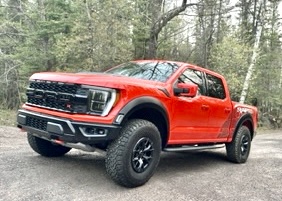
The new Ford Raptor R becomes king of the large-pickup hill with a high-tech 700 horsepower V8 out of the Mustang GT500.
By John Gilbert
There will never be another time when those of us in the business of reviewing new vehicles will have the sheer excitement of those days back about 1970, when factories competed with each other to build the most potent muscle cars to race each other in events like the Trans-Am road-racing series.
Back then, you could go to a showroom and select a Ford Mustang, Chevrolet Camaro, Dodge Challenger, Plymouth Barracuda, Pontiac Firebird, or American Motors Javelin, and approximate the thrills great drivers like Parnelli Jones, Mark Donohue, Dan Gurney, Swede Savage, Sam Posey and others gave us — and themselves — to battle for supremacy.
As a young reporter recently married and with a young son named Jack, we compared all of them for my road-test reviews in the Minneapolis Tribune, and decided to purchase a 1970 Mustang Boss 302, which had a specially-built 5-liter V8 that had solid valve lifters, a forged steel crankshaft instead of cast iron, and was the closest thing to a race engine in a stock, street vehicle. That 1970 Boss 302 was extremely quick, handled with instant precision and revved to over 6,000 RPMs. It also emitted a low roar that built until converting to a high-pitched whistle as you neared the red line.
The only place you can find contemporary manufacturers’ competition for all-out performance nowadays has transferred to pickup trucks, which shouldn’t be surprising, because pickups are the ultimate pure-American vehicle, and the top models from Ford, Chevrolet, Ram, Toyota and Nissan are trying every year to outdo each other to build the baddest, most imposing pickups on the planet.
For several years, Ford built a specialty off-road F-150 that started with a unique widened and toughened new frame for the best stability in the pickup world, and after adding all sorts of ultimate off-road features to upgrade its suspension, terrain-clearance, shock travel to climb the toughest terrain, and anything else imaginable, they named it the Raptor.
It also came with a reinforced 3.5-liter, dual-overhead cam V6 that was turbocharged to EcoBoost standards, and it was declared king of the hill(s). For $78,545, you could rule the roads, and the off-roads.
But then a couple years ago, Dodge sent its Ram division engineers off to build a more powerful rival to the Raptor, and with proper marketing flair designated the new Ram entry the TRX. Fitted with the monster 6.2-liter Hemi V8 out of the Charger/Challenger Hellcat models, the TRX developed 702 supercharged horsepower, which left the Raptor in its rear-view mirrors with “only” 450 horses.
Never mind that the Raptor still had a clear edge in refinement, comfort and compliance, the TRX gained the nickname “Tyrannosaurus Rex,” shortened to “T-Rex” by muscle-car zealots, perhaps unaware of the irony of what may be a dying breed of overpowering hot-rods.
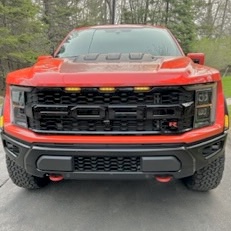
Active shutters aid air intake on the blacked-out Raptor R grille, with all its outlining accessory lights.
Regardless, the new challenge was not to be ignored by Ford, realizing the TRX could whip the Raptor by nearly a half-second from 0-60, registering 4.1 seconds in several tests.
Ford engineers went back to the drawing board, selecting the high-tech 5.2-liter dual-overhead-cam V8 they had built for the new Mustang GT500, and supercharging it up to 700 horsepower. That sounded like a near-miss, compared to the Ram’s 702 horses, but the Ford is significantly lighter, and, sure enough, the Raptor R now can beat the monster TRX by about 0.4 seconds from 0-60. Motor Trend listed the Raptor R’s 0-60 sprint at 3.7 seconds. It was a solid corporate victory against a Dodge power plant that appears to have reached its saturation point.
With 640 foot-pounds of torque backing its 700 horsepower, the Raptor R can scale cliffs in record time through its 10-speed automatic transmission, and those rocky terrain chunks it doesn’t clear will be pulverized by the heavy-duty skid-plates mounted under the raised body. The 700 horsepower peaks at 6,650 RPMs, while the stump-pulling torque needs only 4,050 revs to hit that peak.
For other dimensions, the Raptor R weights 5,960 pounds, with a length of 232.6 inches and a wheelbase of 145.4 inches. Its height is 80.6 inches, and its width is 87 inches. The width means you pretty well fill your driving lane, as well as ay parking spots you may find, but the height is another factor for drivers and passengers, because while it might be easy for a high jumper or pole vaulter, it is greatly aided by a lightweight but strong aluminum running board, finished in a pebbley black material not unlike the spray-in bedliner stuff to prevent slipping when winter brings ice and packed snow onto that running board.
Once inside, the black leather Recaro bucket seats are fantastic, cementing you in place if you’re bouncing around avoiding potholes or tackling Moab, or for just supportive comfort on a trip or for daily driving.
The sticker price is sticky, because all those heavy-duty features are after-market parts are blended with the contemporary safety devices to keep you in your lane and alert you to exterior vehicles and people and the price rises from the test vehicle’s base price of $109,145 to an as-tested price of $109,760.
That includes all the features, and the flashy Code Orange Metallic paint scheme with its black graphic package, and the blackened grille with its active shutter system.
If the price puts it out of your price range — maybe far, far out of your price range — consider that you’re paying a little extra for the imposing look of the Raptor R and for obtaining the baddest pickup truck in your neighborhood.
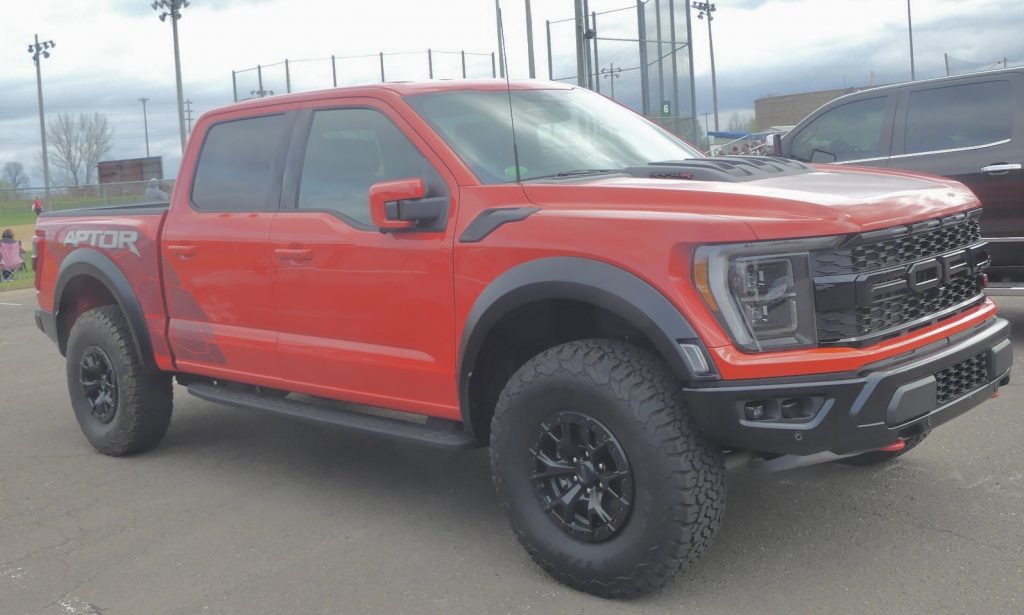
With all the impressive features of the super-wide Raptor R, there is also that high-pitched — and programmable — engine sound.
And here’s an extra inducement: When you start up from a stop and have only a small opening to enter the freeway, you hit the gas pedal hard and you can be treated to one of four selectable exhaust sounds, up to and including the “Sport” setting, which, I swear, goes from a hearty roar as you rev it up to 6,000 revs where it changes into what can only be described as a 1970 Boss 302 whistle!
The only thing better than muscle-car muscle is high-tech muscle-car muiscle.
Sleeker Tiguan combines assets of sedan, SUV
Filed under: Weekly test drives, Autos
By John Gilbert
Back when the Tiguan came out as a new idea for a utility vehicle from Volkswagen, the conservative builder of dependable compact cars like the Golf, Jetta, upscale to the Passat, and the venerable old
Microbus, it seemed to be a curious notion.
Little did we all realize the craze that would follow, with consumers throughout the U.S., and later all around the auto-buying world clamoring for more SUVs until they are now threatening to squeeze normal cars out of the marketplace.
I recall those first Tiguans, because they were loaded with utility, but they were sort of tall and squarish vehicles. Years later, VW added a longer version of the Tiguan for more room and more occupants. When that came out, I appreciated the shorter and more agile shorter version — just because in nearly all circumstances, I prefer the more compact length, but having room for a third row of seats was a family feature.
When the 2023 version of the Tiguan arrived at my house in Duluth, Minnesota, for a week-long test, I first thought it was a wagon version of the Passat or Jetta. No longer was it taller and squarish, but seems to be lower and sleeker in a modernized way that made it enticing to drive. I had to keep rethinking that it was, indeed, a Tiguan, with the benefits of driving agility and three rows of seats that somehow fit inside.
As usual, Volkswagen has made evolutionary moves with the Tiguan rather than revolutionary changes. For styling, the redesigned exterior is subtle, with a new wraparound grille that encompasses the LED headlights as part of its wraparound plan. The foglights are LEDs, too, for maximum brightness and sharp visual cutoff of that brightness.
Otherwise, VW brought the Tiguan up to contemporary elite status by revising the interior with improved seats, a restyled dashboard with an enlarged information display that can be changeable to show you climate, audio, and all other useful information for your drive.
Under the hood, the tried and true Volkswagen 2.0-liter gas 4-cylinder has taken inspiration from the GTI, that timeless hot rod in a small compact that has enthralled performance buyers and drivers for decades. Refining that engine over the years has pretty well perfected it, and adding a turbocharger means you have 184 horsepower at your disposal, with the potent power of 221 foot-pounds of torque, and an 8-speed transmission moving the vehicle with quickness and agility.
That doesn’t mean the Tiguan is a hot-rod, because it is significantly heavier than the Golf or GTI, but it does move well for its size. Volkswagen does a lot better with its technical refinement than it does with its nicknames, in my opinion, however.
The car I tested was the “Tiguan 2.0T SE R-Line Black” model, which would imply it was probably painted black. But no, it was a bright Opal White Pearl paint, which means to be fully accurate you should say it’s a 2.0T R-Line Black model in white. The Black version has blacked out painted grille and alloy wheels, which add distinctly sporty appearance, while the R-Line adds some performance enhancements and trim upgrades.
Those refinements boost the base price of $32,950 up to $34,640, which is a bargain when you evaluate all it has with its competition. All the new safety gizmos are included, such as brake assist, electronic stability control, electronic differential lock, blind-spot assist, lane-keeping assist, pedestrian alert and prevention, stop-start, and a hill-holding concept that prevents you from rolling when you’ve stopped on a steep grade.
The overriding safety of the Tiguan is bolstered by the strong German tradition of build quality and solid feel, something which simply gives you the feeling you’re encased in a solid shell against intrusions by other vehicles. The steering quickness and firm suspension is further confidence-inspiring.
The firm comfort of the front buckets and the 3-person second row still leave you surprised that there’s a fold-down third-row seat that is best limited to youngsters, even though teens or adults would be comfortable back there for short hauls.
Al those features are enough to keep you checking the name on the hatch lid to make sure you have a Tiguan, and not a Golf or GTI that outgrew its livery. And who knows? Maybe next year they will come out with a Tiguan White model that comes in black.
MAMA Spring Rally dazzling dose of future
Filed under: Weekly test drives, Autos
By John Gilbert
ELKHART LAKE, WIS. — Familiarity with the past blended with future surrealism inside my helmet when I drove my first lap around the 4-mile Road America race course to open the 2023 Midwest Auto Media Association Spring Rally. The familiarity came because of previous driving on that track, and my first lap was behind the wheel of a Dodge Challenger Last Call Black Ghost.
Time is running out on the traditional muscle cars with roaring engines, and the most spectacular of all the retro cars is the Challenger, which never lost its charisma as a hot-rod coupe since it was raced by Dan Gurney in the 1970 Trans-Am road-race series, which competed on this very same track. The new one is a special-order, limited-production model that looks and behaves in an eerily nostalgic manner, with an overpowering supercharged 6.2-liter V8 and the accompanying roar as it sends 807 horsepower to the rear wheels. Only this one — officially named “SRT Hellcat Redeye Widebody Black Ghost” — is smooth and sophisticated in its handling as you accelerate, decelerate, cut hard into the late-apex corners of the track’s 14 turns — plus a series of cone-lined chicanes. Those cones are to prevent loonies from overdoing it, although they also provide the added familiarity of any highway construction season slalom.
The surreal part of those two midweek days on the legendary track is that the MAMA Spring Rally was also my official emergence from what seems like a time capsule. It was a year ago at the paddock of this track that I went from knowing I’d had a 100-percent clean bill of health less than a year earlier to suffering shortness of breath that was severe enough to toss me into an ambulance and whisk me to the SSM Health Center in nearby Fond du Lac. Doctors there found a blocked artery and two other partially blocked arteries, and inserted stents in those three arteries.
Incredibly, and maybe miraculously, my heart stopped three times while the surgery was being performed, and those outstanding doctors brought me back to life all three times. When I came to, my wife, Joan, and younger son, Jeff, had joined older son, Jack, at my bedside. I thought it must have been the next morning, but it actually was seven days later, on June 1.
After three weeks in that wonderful hospital, it has taken a full year of slow but steady recovery, which meant no trips to new car introductions or auto shows. Doctors continue to use the “miracle” word to describe my regaining of health and strength to reach something approaching normal. Son Jack accompanied me again this year, and supplied most of the photos of the array of new cars, which we drove. We started by driving seven hours from Duluth to Elkhart Lake — which I drove entirely as another personal test.
The highlights of the test drives included that Challenger and a Mustang Darkhorse, but fed the time-capsule motif by underlining the transformation we’re all facing to electrified powerplants. Yes, I drove a Tesla Model Y, and I will be dealing with the new cars in greater detail as I get to road-test them more extensively. For now, here are capsule looks at my favorites:
DODGE HORNET — This all-new compact vehicle is between tall sedan and compact SUV, and both the 2023 GT, with a 2.0-liter turbocharged 4-cylinder, and nearly identical 2024 R/T,
with amazing power capabilities out of a 1.3-liter 4-cylinder and battery-pack hybrid, have all-wheel drive. The R/T is two seconds quicker 0-60, and the GT pulls away at top speed, but the R/T gets much better fuel economy, with judicious use of the electric-drive feature. With its added technology, the R/T is also more expensive, rising from $40,000 to $50,000 when loaded, while the GT, which lacks the R/T’s paddle shifters, ranges from $35,000 to $41,000. We haven’t heard much about this first major project from newly renamed Stellanis, but we will.
ALFA ROMEO TONALE PHEV — With strong family resemblance to the Giulia sedan and Stelvio
SUV, the Tonale is right between the two in size, and caught me by complete surprise when I learned it was a full plug-in hybrid that can reach 75 miles per gallon, with superb performance and Alfa’s traditional charisma, and riding the crest of a wave of focus by Stellanis on quality control and customer satisfaction for trouble-free ownership — as evidenced by the latest JDPower customer votes and comments. It gets 285 horsepower and 347 foot-pounds of torque from its 1.3-liter gas engine and potent battery pack, balanced for nearly perfect 50-50 weight distribution, and a high-tech mode-selection set of switches and paddle shifters with all-wheel drive. You can lock it into pure-electric potency and drive to work and back all week without buying any gasoline. Price is $47,000 or $57,000 if equipped the way the test car was.
HYUNDAI ELANTRA “N” — The popular compact reworked into a performance model was one of the most impressive sporty cars at the track, with exceptional seats, power, sound, quick-handling, and acceleration and braking. If you want a fun family car, that is eager to be taken to “track days,” the Elantra N is a $35,000 prize.
BMW M2 COUPE — One particular know-it-all type of journalist held court next to the BMW area of the paddock and raved about how BMW had “lost it” from a design standpoint and are no long desirable. That is a common trend among the auto media these days, because of over-dramatized grille design of various models. I couldn’t resist suggesting the other side of the coin is that all the great BMWs from the past 30 years share a similarity that makes them all look like the latest model; while the new-grille design is immediately distinguishable as “the new one.” The always-popular M3 has grown too big, but also big enough to room for the more compact M2 to become its replacement for serious drivers on a budget. With an inline 6-cylinder, the M2 is swift, precise, extremely comfortable for seat support, and comes in either stick or automatic.
More than 100 MAMA members showed up for the Rally, and we voted on best vehicles in various categories, such as:
Favorite family vehicle: Honda CR-V Hybrid got my vote, edging the Kia Telluride X-Pro;
Favorite luxury vehicle: Genesis had a hat trick of winners, with the Genesis GV70 Electrified SUV, the G80 Electrified sedan, and the splendid G90 sedan, which won Motor Trend’s Car of the Year award, all topping the Mercedes Benz AMG GLE 53 and the Lexus RX.
Favorite Off-Road vehicle: Ford F150 Raptor R, nipping the Jeep Wrangler 4Xe 20th Anniversary.
Favorite Pickup: Ford Maverick Tremor, with close competition from Toyota’s new twin-turbo Tundra, and the redone Chevy Colorado.
Favorite Performance vehicle: I had to give it to the Hornet R/T for its high-tech functionality, in the tightest competition of any category, with the BMW M2, Kia EV6 GT, Lexus RC-F, and Mercedes AMG GT 63, outrunning the rumbling Challenger.
Favorite EV or Plug-In vehicle: Alfa Romeo Tonale PHEV narrowly ahead of the Genesis GV70 and Prius Prime.
Favorite Affordable vehicle: Subaru Impreza RS in a narrow decision over the Hornet GT and the reborn Acura Integra.
From those selections, I found it interesting that Stellanis caught me by surprise with the Alfa Romeo Tonale being aimed at changing the traditional reputation of Alfas for being fun, charming, but unreliable to being fun, charming, and reliable enough to outpoint Mercedes, BMW and Audi in the JDPowers surveys for initial quality and reliability. The Tonale, I’m told, is being focused on the U.S. market. To which I say, “Bring it on!”
Stellanis also earns strong points in that the Hornet is a candidate for both performance and affordable vehicles and the Alfa is a winner among electrified answers that move into the future without going all-electric.
Also, while Honda is altering its effort for hybrids in Accord, Civic and CR-V, the South Korean partners of Hyundai and Kia continue their dazzling array of electrified cars, with Hyundai’s exotic new Ioniq6 and the still flashy Ioniq5, plus those Genesis upscale models, and Kia’s EV6 and the EV6 GT. And there’s that fall-back choice of the Elantra N for traditional but highly-efficient fun.
It’s about time I came out of my time capsule to try to catch up with such an outstanding array of new and transitional vehicles.


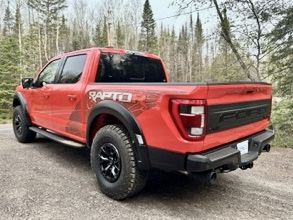



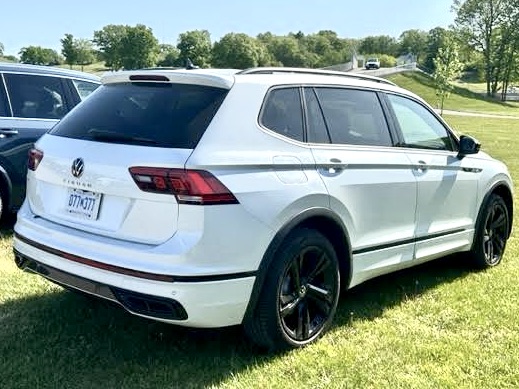
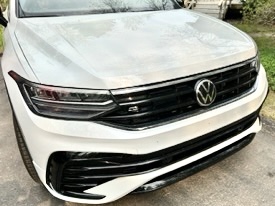
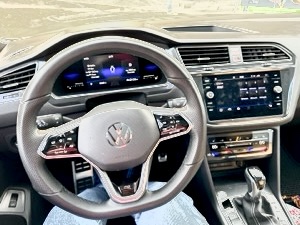
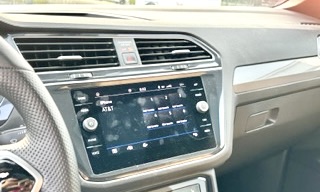
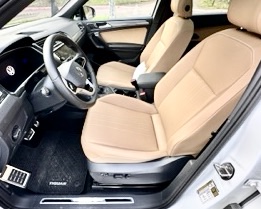
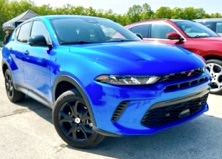
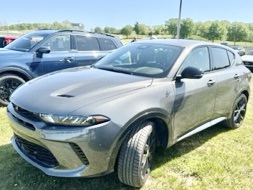
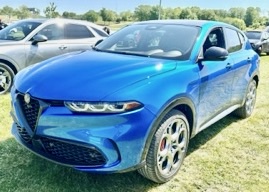
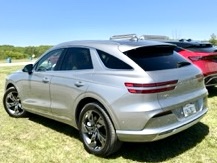
 John Gilbert is a lifetime Minnesotan and career journalist, specializing in cars and sports during and since spending 30 years at the Minneapolis Tribune, now the Star Tribune. More recently, he has continued translating the high-tech world of autos and sharing his passionate insights as a freelance writer/photographer/broadcaster. A member of the prestigious North American Car and Truck of the Year jury since 1993. John can be heard Monday-Friday from 9-11am on 610 KDAL(www.kdal610.com) on the "John Gilbert Show," and writes a column in the Duluth Reader.
John Gilbert is a lifetime Minnesotan and career journalist, specializing in cars and sports during and since spending 30 years at the Minneapolis Tribune, now the Star Tribune. More recently, he has continued translating the high-tech world of autos and sharing his passionate insights as a freelance writer/photographer/broadcaster. A member of the prestigious North American Car and Truck of the Year jury since 1993. John can be heard Monday-Friday from 9-11am on 610 KDAL(www.kdal610.com) on the "John Gilbert Show," and writes a column in the Duluth Reader.